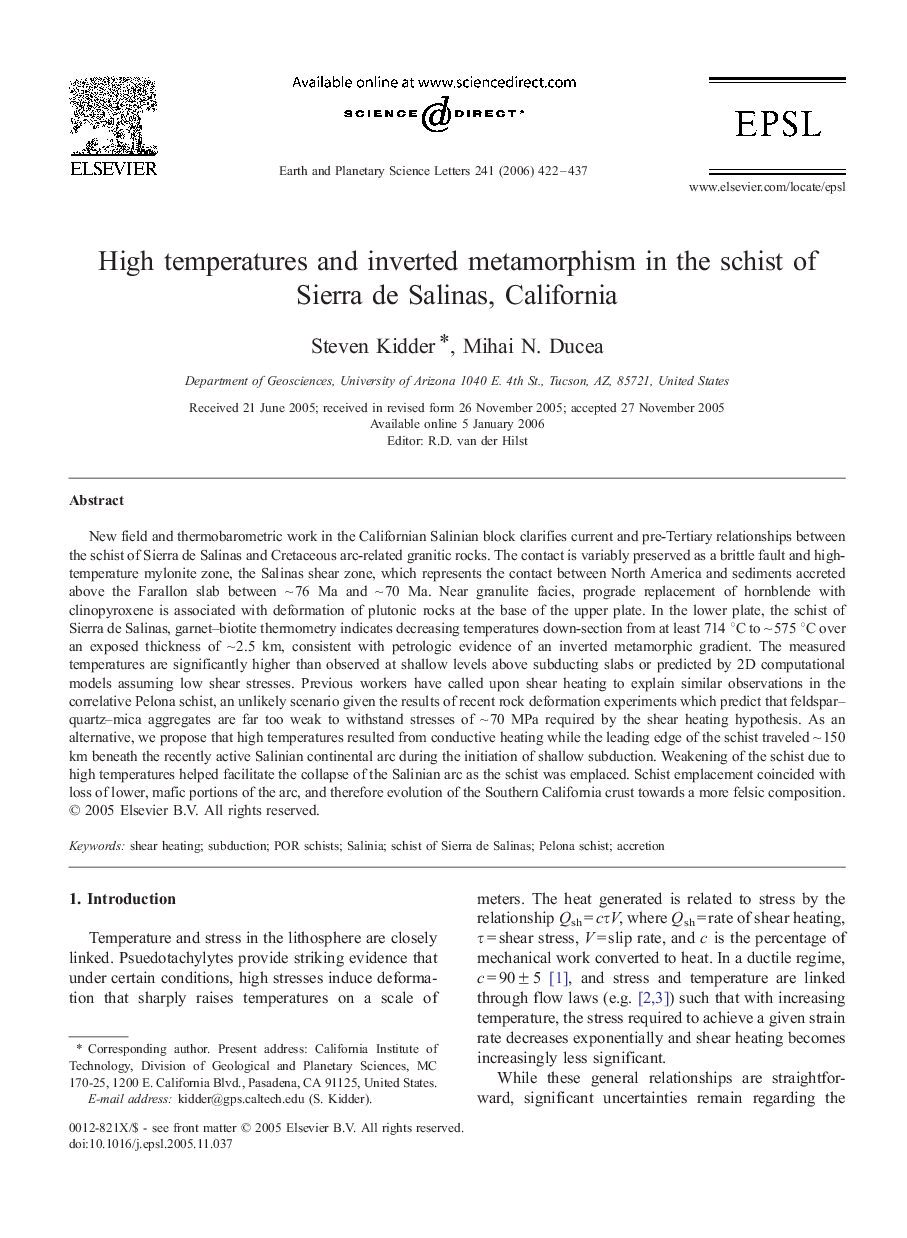| کد مقاله | کد نشریه | سال انتشار | مقاله انگلیسی | نسخه تمام متن |
|---|---|---|---|---|
| 4681190 | 1634952 | 2006 | 16 صفحه PDF | دانلود رایگان |

New field and thermobarometric work in the Californian Salinian block clarifies current and pre-Tertiary relationships between the schist of Sierra de Salinas and Cretaceous arc-related granitic rocks. The contact is variably preserved as a brittle fault and high-temperature mylonite zone, the Salinas shear zone, which represents the contact between North America and sediments accreted above the Farallon slab between ∼ 76 Ma and ∼ 70 Ma. Near granulite facies, prograde replacement of hornblende with clinopyroxene is associated with deformation of plutonic rocks at the base of the upper plate. In the lower plate, the schist of Sierra de Salinas, garnet–biotite thermometry indicates decreasing temperatures down-section from at least 714 °C to ∼ 575 °C over an exposed thickness of ∼ 2.5 km, consistent with petrologic evidence of an inverted metamorphic gradient. The measured temperatures are significantly higher than observed at shallow levels above subducting slabs or predicted by 2D computational models assuming low shear stresses. Previous workers have called upon shear heating to explain similar observations in the correlative Pelona schist, an unlikely scenario given the results of recent rock deformation experiments which predict that feldspar–quartz–mica aggregates are far too weak to withstand stresses of ∼ 70 MPa required by the shear heating hypothesis. As an alternative, we propose that high temperatures resulted from conductive heating while the leading edge of the schist traveled ∼ 150 km beneath the recently active Salinian continental arc during the initiation of shallow subduction. Weakening of the schist due to high temperatures helped facilitate the collapse of the Salinian arc as the schist was emplaced. Schist emplacement coincided with loss of lower, mafic portions of the arc, and therefore evolution of the Southern California crust towards a more felsic composition.
Journal: Earth and Planetary Science Letters - Volume 241, Issues 3–4, 31 January 2006, Pages 422–437